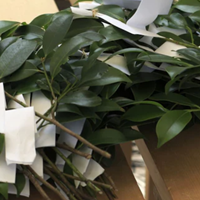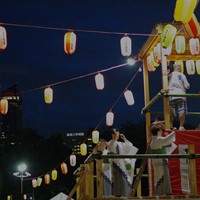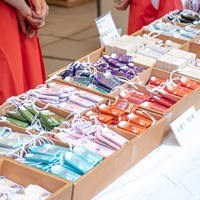Japanese New Year's Decorations: Culture, Traditions, Religion
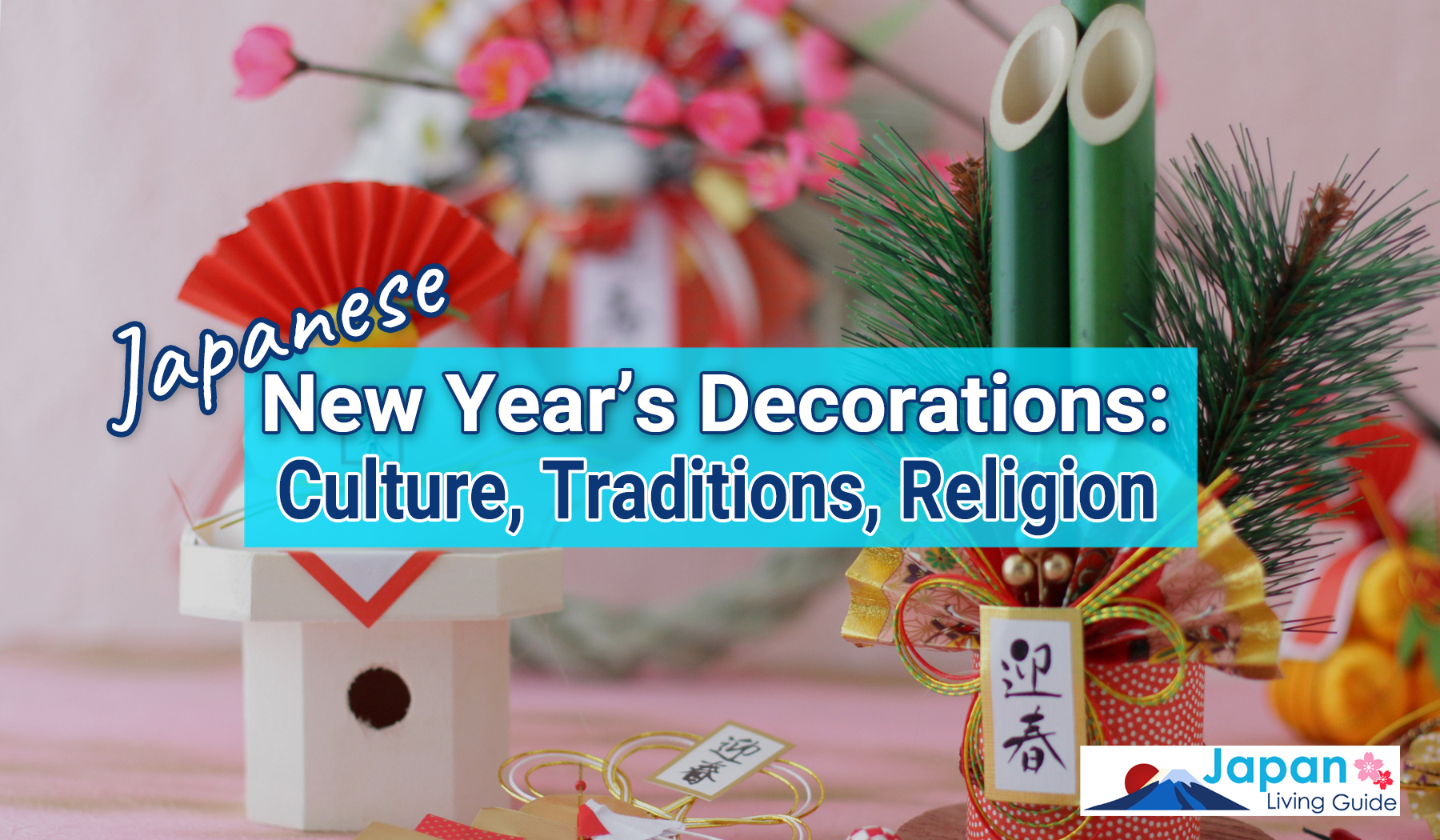
This page contains affiliate links.
As the New Year approaches, many shops, commercial buildings, and houses in Japan decorate for the occasion. It should come as no surprise that in Japan with its rich traditions, New Year's decorations are not only aesthetically pleasing, but also have a variety of meanings. Whether you would like to decorate your home in Japan for the New Year or are simply interested in local traditions and culture, this article will provide you with all the essential information on Japanese New Year's decorations.
If you would like to learn more about various Japanese New Year traditions, please check this article. To learn about Japanese Zodiac and how it is related to Japanese New Year traditions, explore popular lucky charms, please check the following articles: "The Japanese Zodiac: Unleash the Fun of This New Year Tradition" and "4 Popular Japanese Lucky Charms For the New Year". If you stay in Tokyo during the New Year, be sure to check our article covering "Great Places for 'Hatsumode' around Tokyo during the Japanese New Year".
Japanese New Year's Decorations
There are certain traditional New Year's decorations that you would almost certainly come across at the end of December and the beginning of January in Japan. Please keep reading to learn about Japanese New Year's decorations and their meanings in the context of Japanese culture as well as Shinto religion.
Kagami-mochi
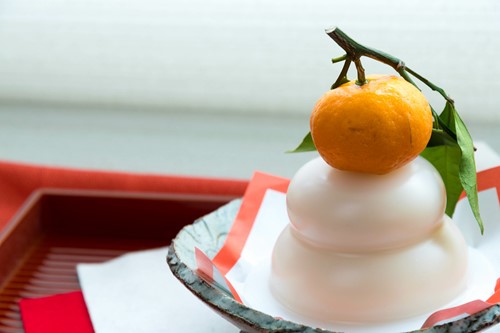
When visiting a supermarket at the end of the year, you are bound to come across a peculiar product that appears on the shelves in December and mysteriously disappears in January. It is made up of two white rice cakes, larger one and smaller one, stacked on top of each other, with an orange-colored fruit called "daidai" on the very top. This is a Japanese traditional New Year's decoration called "kagami-mochi," which translates to a "mirror rice cake." Mochi has a round shape, similar to that of a mirror. In Japanese culture, a mirror is more than just an object that reflects whatever is in front of it, it also appears in local folklore and is one of the three sacred treasures, along with a sword and jewel.
Kagami-mochi is not only visually appealing, but it also acts as a "yorishiro" for the Japanese New Year god "Toshigami." In Shinto religion, a "yorishiro" is an object that summons gods. At the same time, kagami-mochi also serves as an offering to the New Year god. On January 11, the Japanese traditional custom of opening a kagami-mochi, known as "kagami biraki," takes place.
A knife is not used to open this Japanese New Year's decoration and it is broken with a mallet or with one's bare hands. Because the custom takes place in January, the kagami-mochi is already dry, allowing it to be "broken." Since kagami-mochi is essentially a food, it should come as no surprise that it is eventually cooked and consumed. Many Japanese people put in an "ozoni," a traditional Japanese soup for the New Year. If you would like to learn more about Japanese New Year's food, please check our article on "osechi ryori."
Kadomatsu
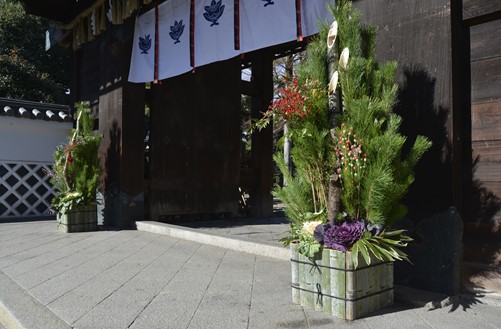
When taking a walk at the end of December in Japan, you would probably encounter a Japanese New Year's decoration standing in front of a house, commercial building, or department store. This type of traditional Japanese New Year's decoration is called "kadomatsu" which can be translated as a "gate pine." In addition to pines, it also often features 3 bamboos, Japanese plums, etc. While the left and right pines may look identical, they are actually different species of pine. When looking at the entrance from outside, a Japanese black pine, also known as "omatsu" or a "male pine," will be on the left side.
Then, the right side is occupied by a red pine, also known as a "female pine" or "mematsu" in Japanese. Here it is important to mention that a Japanese black pine is often used for both the right and left sides. If you look at the above photo, you may see that bamboos are cut obliquely. This type of slicing is called "sogi" in Japanese. This design resembles a smile, giving the impression that the kadomatsu is laughing. In Japan, there is a proverb that says "warau kado niwa fuku kitaru."
It means "fortune comes to a gate that laughs," leaving no doubt that a "laughing kadomatsu" will bring you luck and fortune in the coming year. As opposed to sogi, another type of bamboo cutting design known as "zundo" is done horizontally. Although sogi is more popular nowadays, zundo is the original way of cutting bamboo for kadomatsu decorations. In addition to being aesthetically beautiful, a kadomatsu also acts as a yorishiro and a sign for Toshigami to locate your home.
Shime-kazari
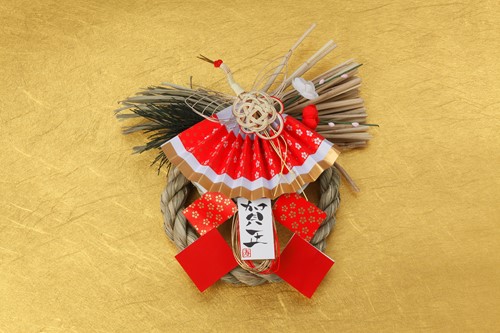
Shime Kazari is a traditional Japanese New Year's decoration that is often placed at the entrance where it wards off misfortunes and welcomes the New Year god. It is made out of a straw rope that has a sacred meaning in the context of Japanese Shinto religion, and a beautifully folded piece of paper called "shide." It may also include various other elements such as daidai, Yuzuriha tree leaves, etc.
This traditional Japanese New Year's decoration is available in a variety of shapes and sizes. The shime-kazari in the photo above is made of a rope twisted into a round shape that resembles a Christmas wreath, especially when hung on a door.
When to Put Up Japanese New Year's Decorations
Although there is no set date for putting up New Year's decorations, the 13th of December marks the start of New Year's preparations in Japan. However, not many business and homes start decorating so early. Christmas with its illuminations and decorations dominates the cityscape until December 25. As a result, many Japanese people put up New Year's decorations after removing Christmas ones.
When decorating your home for the New Year, please keep in mind that certain dates, such as December 29 and 31, should be avoided. In Japanese, the 29th sounds like "double hardships," implying that it is probably not the best day to decorate. On the other hand, if you decorate on December 31, it would mean that your decorations are up for only one night before the New Year, similar to how funeral preparations were completed the day before the ceremony. As it can be easily understood, any symbolic connection between New Year's celebrations and funerals is strongly undesirable.
When to Take Off Japanese New Year's Decorations
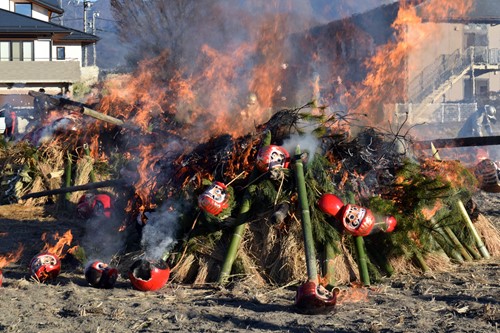
New Year's decorations are usually left up until January 7. In some cases, until January 15, when «koshogatsu» takes place in Japan. On that day, a fire festival known by various names such as "dondo-yaki," "sagicho," etc. is held. The New Year's decorations are traditionally burned during the festival and the Japanese god of New Year known as Toshigami is sent back to heaven until the next year.
If you wish to dispose of your Japanese New Year's decorations in this traditional manner, please check with a Shinto shrine for more information. If dondo-yaki is not available in your area, you can still dispose of your New Year's decorations after purifying them with salt.
In this article, we have covered various Japanese New Year's decorations. If you would like to further immerse yourself in Japanese culture, how about sending "nengajo"? For more information on New Year's nengajo cards, please check this artice. While many people celebrate the New Year at home, it can also be exciting to spend the New Year's holidays traveling. When searching for an accommodation to stay during your trip in Japan, one of the hotel booking websites can help you find the best possible lodging.
No matter how you choose to spend the New Year holidays in Japan, it is important to stay warm. Fortunately, a traditional Japanese heating device called «kotatsu» can help you get through the winter while also saving you money on electricity bills. For more information, please check our article on kotatsu.
Purchasing New Year's Decorations Online
It is easy to get Japanese New Year's decorations via Amazon. such as Kagami-mochi, Kadomatsu, and Shimekazari.

